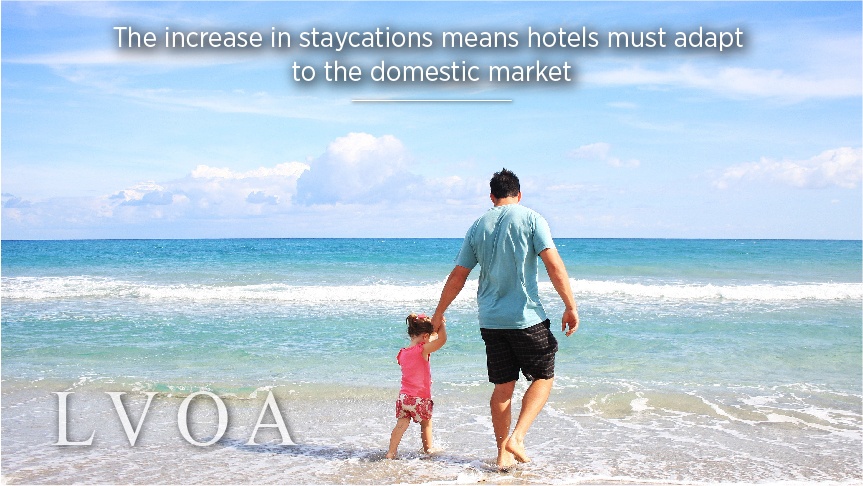If 2020 was the year that travel came to a standstill, then 2021 is the year of the staycation. With many countries banning or discouraging international travel, on top of intermittent curbs on domestic travel, many wanderlusting customers are searching for that holiday feeling closer to home, while hotels are looking to take advantage of that local market.
However, it’s not as easy as hotel management simply turning the “Open” sign over on the door, especially if your hotel previously catered to international guests. To make the most of the domestic market as a business opportunity, several key factors need to be carefully considered:
1. Understanding the market
If your hotel previously catered to international clients and is now pivoting to the local market, the first thing to do is to take the time to truly understand that market. After all, what locals are looking for is not the same as what a foreign guest needs or wants, so your product offering, operations and services may need to adapt.
Will local guests stay longer? Will weekend business soar, while weekday business suffers? Do local guests prefer to use the hotel’s facilities on a day pass (pool, gym, spa) or dine at a hotel restaurant, rather than stay overnight? These are unprecedented times, so take the lead from data as it comes in and keep things dynamic and flexible.
That also means collecting data wherever possible. Conduct thorough market research, understand the demographics of the domestic market as a whole and of your new guests, from what they like to do at your establishment to how they heard about your hotel.
2. Product changes
Once you understand what your new market needs, then it’s time to adjust your product offerings. Create new packages that cater to the local market, not just for accommodation, but also for facilities. Think affordable lunch sets at the hotel restaurant, spa and wellness vouchers, day passes, weekend packages, family-friendly packages, and public holiday special offers.
Marc Finney, the Head of Hotels & Resorts Consulting at Colliers, says of UK staycations: “Guests will be seeking luxury and treats following the stresses of the pandemic lockdowns, resulting in an increase in spending within hotels in the form of room upgrades and more expensive meals, and also indulgences such as spa treatments, and afternoon teas.”
Some cultural activities, such as performances or guided tours, may need to be put on hold if they’re not relevant to the local market; whereas others, such as cooking classes, may still appeal to the domestic crowd.
3. Marketing changes
Once you have your new target market and your tailored product offerings, then it’s time to switch up your marketing. Again, this requires experimentation: switching marketing materials to the local language, identifying and establishing connections with local media and/or influencers, as well as trying out new marketing channels.
Although budget is likely tight, it’s advisable to bring in a new hire or work with a consultancy that best understands the domestic market, who can help re-conceptualise the hotel and transpose marketing to reach new potential customers in the ways they find most engaging.
4. Beat the competition
In places such as Thailand, where much of the travel industry relies on international tourism, the competition for the domestic market – particularly affluent Thais and expats – is fierce. Yes, those who can’t travel overseas are looking for domestic travel opportunities, but there is a lot of choice and the deals available are really very reasonable.
As always, keep an eye on your competitors in your locale, as well as elsewhere in the country. If you’re based in the capital, the local population may respond best to day passes and F&B promotions, while those in neighbouring cities are looking for weekend or full-week packages. Does your hotel offer a city break for out-of-towners, or a coastal escape for city-dwellers?
What’s more, with the rise of remote work, you may wish to consider appealing to those tired of the home office; be that for a day, or for a long stay out of town, with a WFH (Work From Home) package or similar.
Finally, consider what your USP is specifically for the local market. For example, here in Bangkok, the new Four Seasons and Capella, situated next to each other on the Chao Phraya, are new kids on the block. Who wouldn’t want the opportunity to try out a brand new five-star hotel before the crowds arrive?
On the other hand, classic hotels such as The Mandarin Oriental have reputation and prestige on their side (as well as a newly completed refurbishment, replete with updated hotel interior design). For some locals, this may be the first and only time they have the chance to stay at such a historic hotel, dine at the Michelin-starred restaurant, or indulge in a treatment at the award-winning spa – be that because of time, availability, or a lower price point.
5. Stay open-minded
Though staycations are certainly a trend here to stay for the remainder of 2021, their relevancy in 2022 and beyond is unknown, as is the vision of what international travel will look like post-Covid. Don’t fall into the trap of making staycations a half-hearted stop-gap or temporary solution until your “normal” market comes back. The thing is, this may be your new normal, or a large part of it.
Instead, look at the pivot to the staycation as an opportunity to diversify and learn, as well as build deeper connections within the local community. Consider how the relationships with your customers (who may be converted into long-term return guests or word-of-mouth marketing channels if you provide an amazing staycation experience for them) and collaborations with local businesses, influencers, or other organisations, could mutually benefit all parties moving forward.








